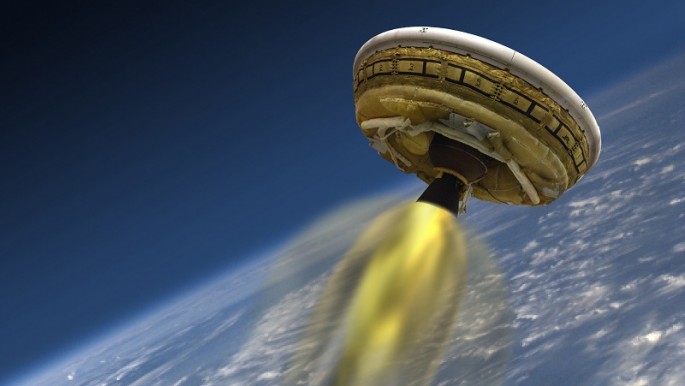Due to bad weather, NASA has postponed the second test flight of the space agency's "flying saucer" which will one day land scientific payload on the surface of Mars.
If favorable weather will develop soon, the launch of the largest parachute mechanism ever deployed or the Low-Density Supersonic Decelerator will be evaluated for a launch on June 6, Saturday.
According to NASA officials, a line of rain showers has developed overnight that is slowly moving towards the launch site location that can result in unstable wind conditions that can prevent the balloon launch from the craft.
Prior to this setback, high levels of ocean waves caused the delay for this launch for seven days which was originally scheduled early this week. The launch window for this test flight is extended until June 12.
When it comes to Mars exploration, NASA has already sent probes and robotic spacecraft including land rovers on the surface of the planet however, this new kind of technology called the Supersonic Ringsail Parachute can now allow heavier spacecraft to bring food and supplies and even humans that will land safely to build colonies on the Red Planet.
This is caused by the thin atmosphere on Mars that is why a parachute is needed to help a heavy and fast moving spacecraft to touchdown gently and safely on the terrain of the alien planet.
Meanwhile, the test will entail launching the flying saucer that is shaped like a donut along with its massive parachute into an altitude of 120,000 feet over the Pacific ocean using a giant balloon. This balloon will help launch the craft by releasing it into the stratosphere while the rockets will lift the Low-Density Supersonic Decelerator higher, up to 180,000 feet that can reach supersonic speeds.
NASA says that the Low-Density Supersonic Decelerator will travel at three times the speed of sound where the saucer will inflate and slow down the vehicle as a parachute will be deployed at 2.35 times the speed of sound that will safely splashdown on the ocean.
NASA plans to bring the first humans on Mars by 2030.



























